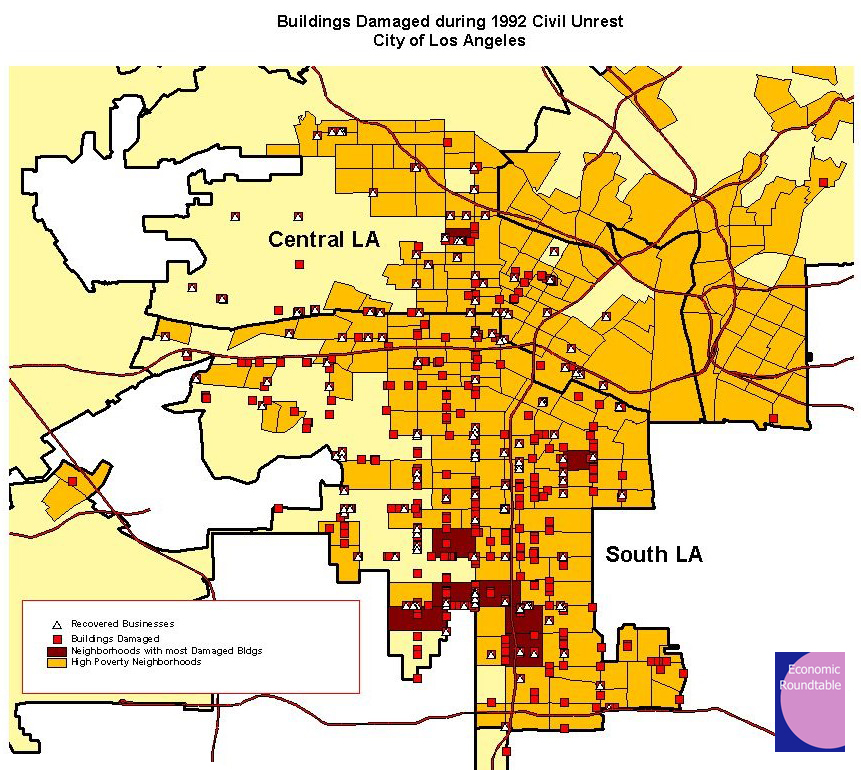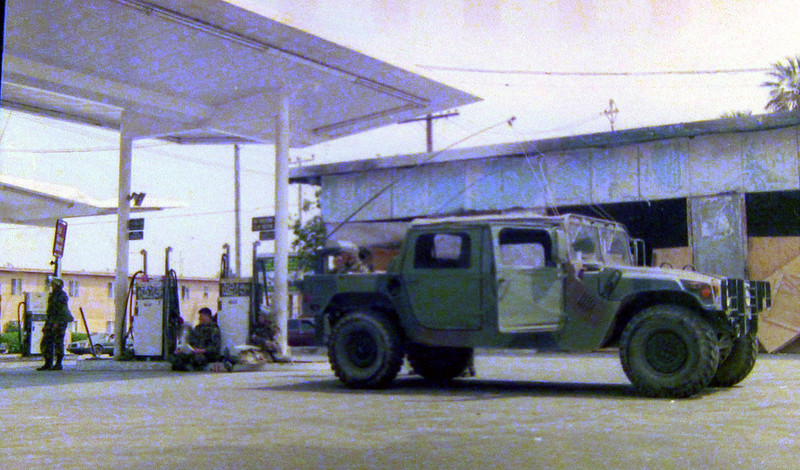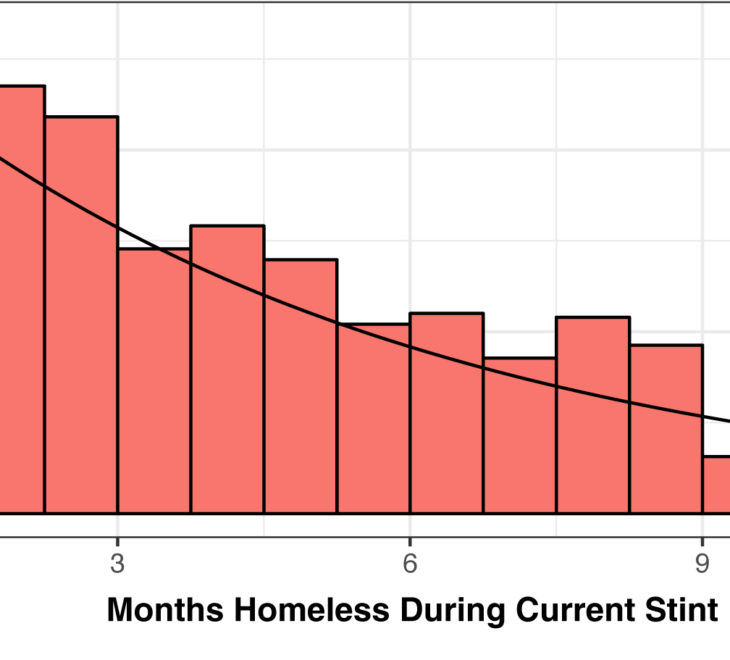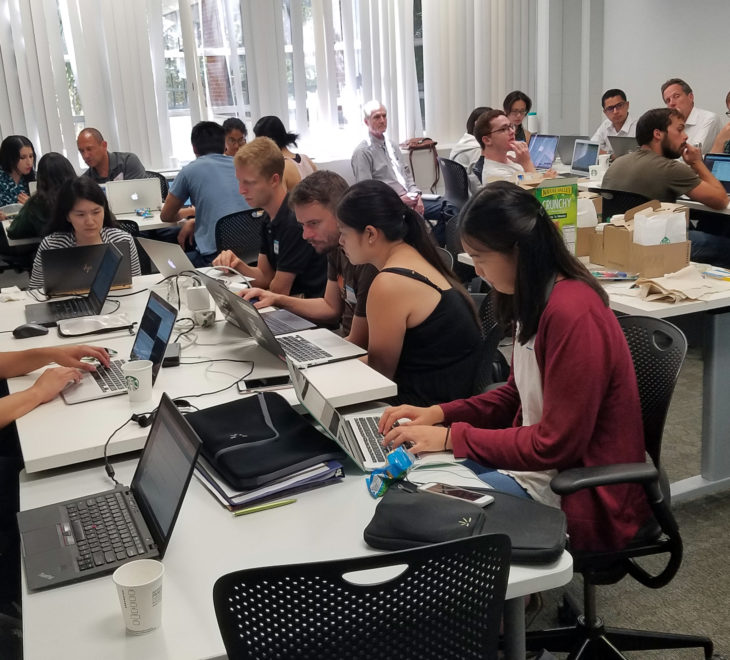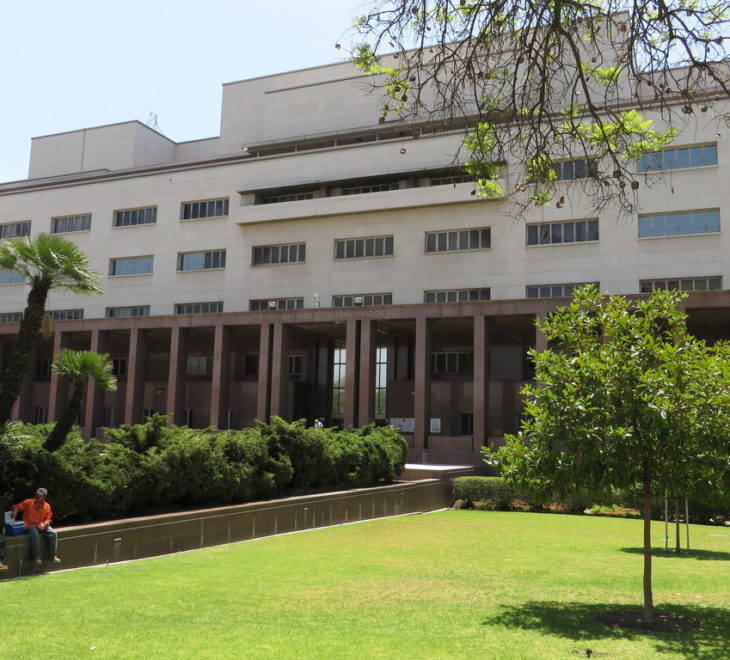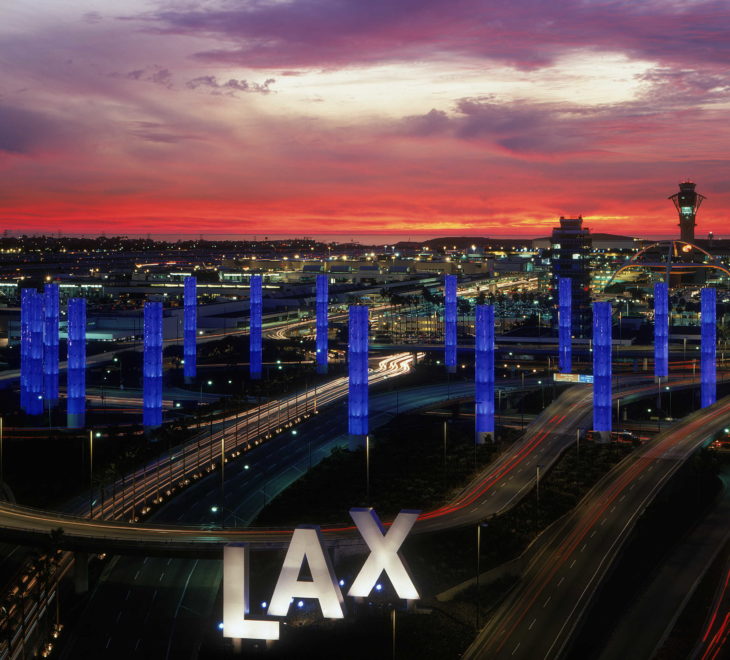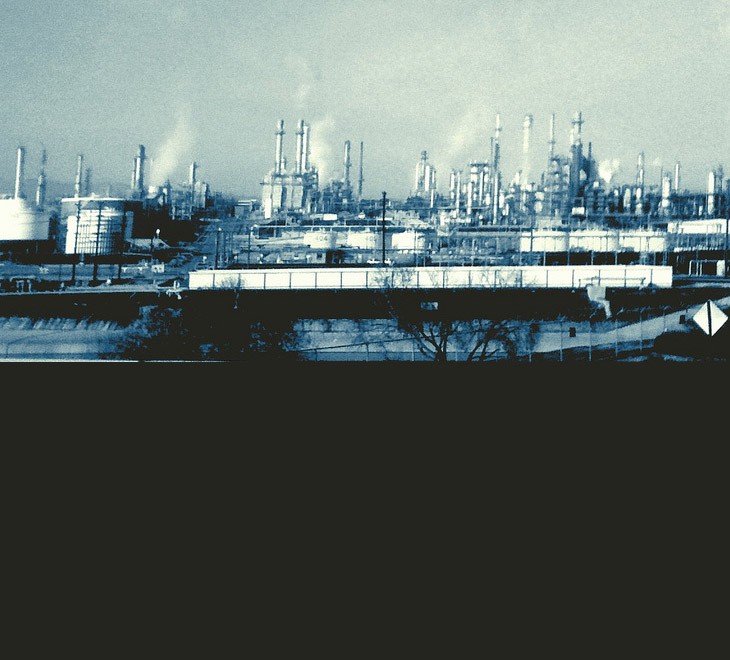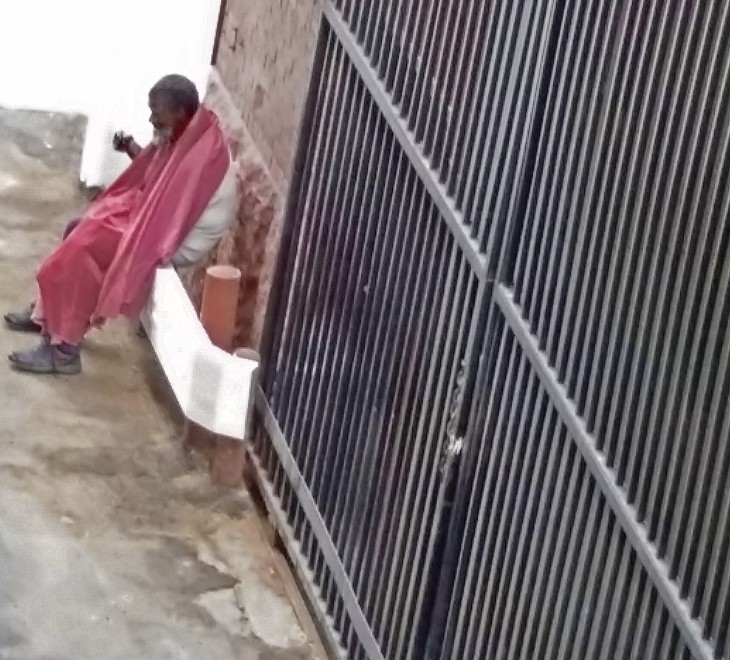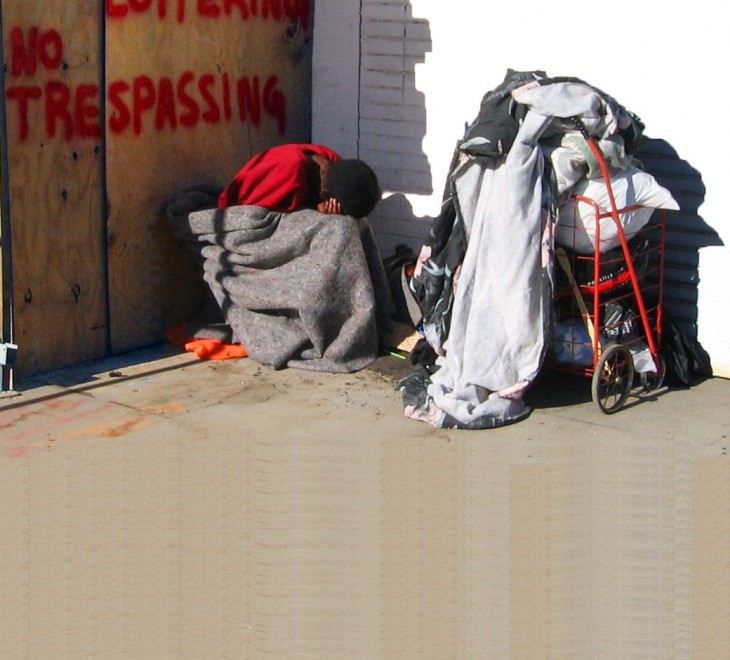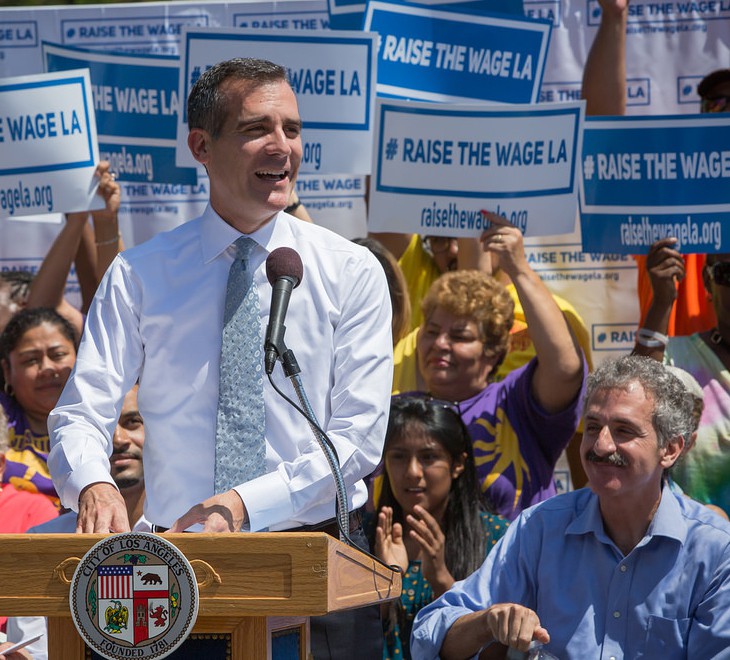This briefing paper reports on business recovery in buildings damaged during the 1992 civil unrest, the availability of jobs in different areas of Los Angeles, and changes in South Los Angeles’ industry base since 1992.
Where were buildings damaged during the civil unrest located?
Most buildings damaged during the civil unrest were located on commercial streets in high poverty neighborhoods in South Los Angeles. Of the 547 damaged buildings in the City of Los Angeles, 428 (78 percent) were located in South Los Angeles, and 106 (19 percent) were located in Central Los Angeles.
How many businesses were operating in 1999 in buildings that had been damaged during the 1992 civil unrest?
Business recovery was much slower in South Los Angeles than in Central Los Angeles, and the businesses operating in South Los Angeles’ damaged buildings employed fewer workers and paid lower wages than those in Central Los Angeles. Of the 428 damaged buildings in South Los Angeles, only 19 percent had payroll-tax-paying establishments in 1999.
Did jobs become more available for South Los Angeles residents following the 1992 unrest?
There was one job to be found in South Los Angeles for every 4.5 residents in 1992, making it the most job-scarce area of the city. Compared to the city-wide average of 2.3 residents per job, South Los Angeles had only half as many jobs per residents as the city as a whole in 1992. In 1999, there were 2.8 residents per job citywide and 7.2 residents per job in South Los Angeles. This means that there were only one-third as many jobs per resident in South Los Angeles as in the city as a whole.
Which industries in South Los Angeles grew between 1992 and 1999?
Only one sector, education, had significant growth in the seven years following the civil unrest (7,700 jobs added). The administrative and support service sector has slight job growth (100 jobs added).
Which industries in South Los Angeles lost jobs between 1992 and 1999?
The greatest job losses were in nondurable manufacturing (20,200 jobs lost) and wholesale trade (12,500 jobs lost). Declining industry sectors lost a total of 51,600 jobs. The ratio of job losses to job gains was 6.6 to 1, for a net loss of 43,800 jobs.
Are there prospects for economic recovery in South Los Angeles?
The abundance of energized and hopeful job seekers in South Los Angeles, the emergence of a new generation of sophisticated and competent grassroots organizations, locational advantages derived from a mature transportation infrastructure, and proximity to the region’s urban center can be the seedbed for an economic renaissance. Potential tools for an industrial strategy include land use decisions, fee schedules, infrastructure improvements, expedited permit processing, nuanced application of environmental regulations, access to public financing tools, targeted job training, industry forums that foster well-informed problem solving, and job creation strategies driven by the skills and potential job mobility of residents.
Chapter Headings:
- Business Recovery in Buildings Damaged during the 1992 Civil Unrest
- The Geography of Unrest
- Business Recovery
- Industry Distribution of Recovered Businesses
- Job Availability
- Changes in South Los Angeles Industries
- Discussion
Photograph by Waltarrrrr, “1992 Los Angeles Riots“. Uploaded to Flickr Creative Commons on April 29, 2012, taken on May 2, 1992 in South Los Angeles. Protected under the CC BY-NC-ND 2.0 DEED license. No alteration or commercial use of this photo made by the Economic Roundtable. The Economic Roundtable has not remixed, transformed, or built upon the material.
